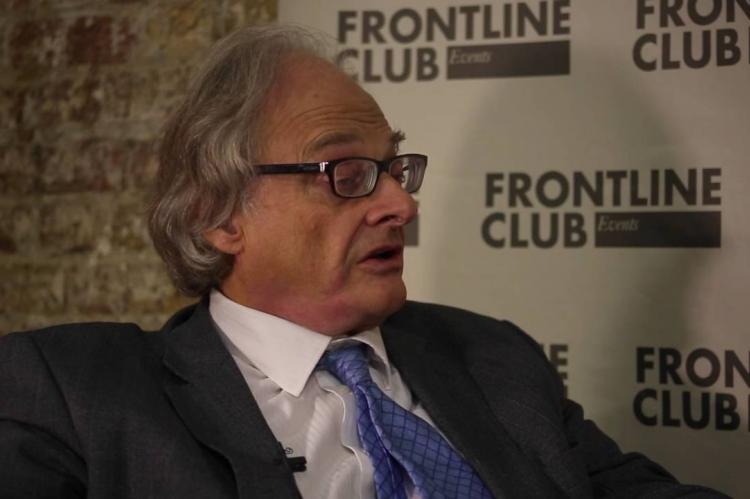Inconsistencies in Patrick Cockburn’s article on Turkey’s Afrin operation
Patrick Cockburn’s article includes factual mistakes and voices claims of YPG leaders without checking
On 5 April 2018, an article written by Patrick Cockburn was published in London Review of Books. In the article, the author criticizes Turkey’s Operation Olive Branch against the YPG in the Afrin region of Syria. However, the article includes several inconsistencies and factual mistakes.
Firstly, the author alleges that the YPG is the only capable local force that could effectively face DAESH and “[t]he Free Syrian Army and the Sunni Arab militias had all turned out to be too close to IS or al-Qaida, or useless and corrupt.”
However, the success of Turkey’s Operation Euphrates Shield clearly shows the effectiveness of the Free Syrian Army under the right guidance and support. With the Operation Euphrates Shield, the Turkish military and the Free Syrian Army (FSA) liberated the Syrian districts of Azaz, Mare and al-Bab from DAESH and created a 2,000 square kilometer safe zone. The FSA is successfully providing the security of the Euphrates Shield Zone where 70,000 Syrians have already returned and 100,000 more refugees are expected to return as part of a project maintained by the Family and Social Policies Ministry of Turkey and the United Nations High Commissioner for Refugees (UNHCR).
Secondly, the author voices in his article the claims of the YPG spokesmen and representatives without checking. The article mentions “[t]here was little the Kurds could do to stop the Turks and their FSA allies. They had no defence against Turkish artillery and air attack and their only supply road was held by Syrian government forces. The YPG spokesman Nouri Mahmoud, speaking before the fall of Afrin city, told me that Kurdish civilians could use the road, but ‘We are not allowed to send weapons to Afrin.’”
On the contrary, the Assad regime did not only allow the YPG to move its forces to Afrin, but it also sent its own Iranian-backed militia to fight alongside the YPG against the Turkish military and Turkish-backed rebels. This fact can be checked and confirmed with a brief search on the open resources, including The Independent in which the author regularly has his articles published. The Assad regime also allowed the YPG militants with their weapons to cross the territory in its control to reach Afrin. The YPG reinforcements from the east of the Euphrates even paraded in Afrin city to increase the morale of the militants.
Another unchecked claim of the YPG representatives that the author included in his article is the claim that Turkey targeted “civilian convoys” in Afrin. The article states “Elham Ahmad, a senior Kurdish official who had just returned from Afrin, said that ‘Our convoy of 150 civilian cars was hit by a Turkish airstrike. We ran away from the cars, but thirty of them were destroyed and one person killed.’”
The Turkish military targeted two large convoys of cars during the Operation Olive Branch, on February 20 and February 22 respectively. Both of these convoys consisted of the militia reinforcements of the Assad regime and the YPG, trying to reach Afrin. The author does not specify which strike of the Turkish military that the YPG representative Elham Ahmad refers to, but both strikes targeted the armed militants’ convoys as explained above.
Furthermore, the author stresses that following the capture of Afrin city by the Turkish military and the Turkish-backed FSA units, some FSA members were involved in looting of the property of the Afrin residents and for this reason claims that “Turkish troops and the FSA began behaving much as their victims had feared they would.”
Nevertheless, the article does not mention that the ones who were involved in the looting of the private property in Afrin were immediately condemned by the FSA, that there is an investigation about such incidents going on and more than 200 FSA members who took part in looting were arrested. The looted properties of the Afrin residents were either returned or their values were compensated. On the other hand, the article neither mentions that according to the reports of the UN, Human Rights Watch and the Amnesty International, the YPG has a proven criminal record of the impunity of its members who plundered the properties of civilians in places where they captured.
Finally, the article states that around 200,000 people had fled Afrin by March 19. However, it does not mention that the people who fled because of the hostilities in the region had started to return back weeks before the publishing date of the article. It also ignores the YPG and the Assad regime trying to block the civilians to return back to the Afrin region, which is now under the control of the Olive Branch forces, and statements such as that of PYD’s co-chair Eldar Khalil calling the civilians displaced from Afrin to “resist” and not to return to their homes.



